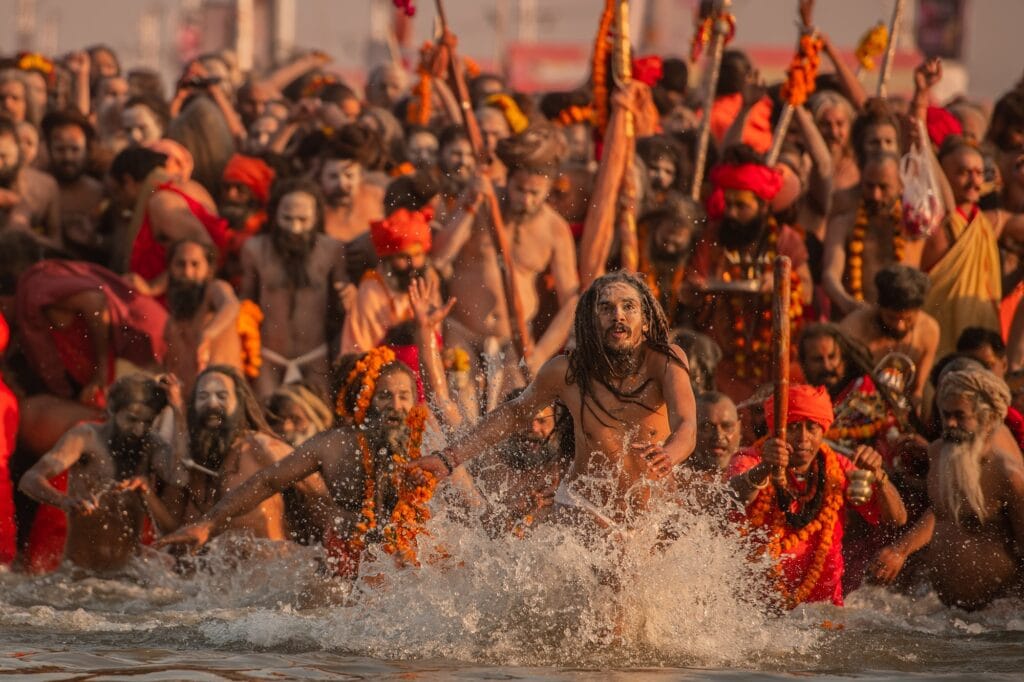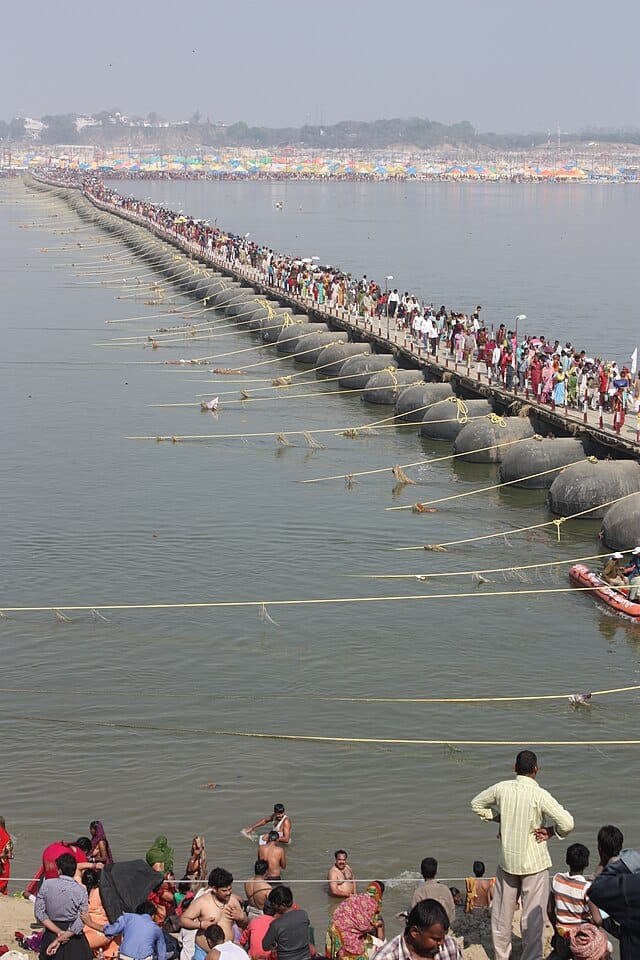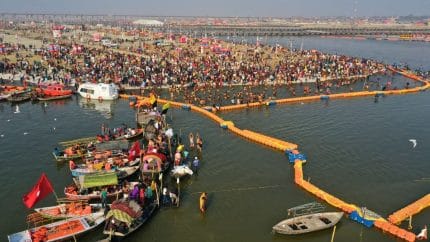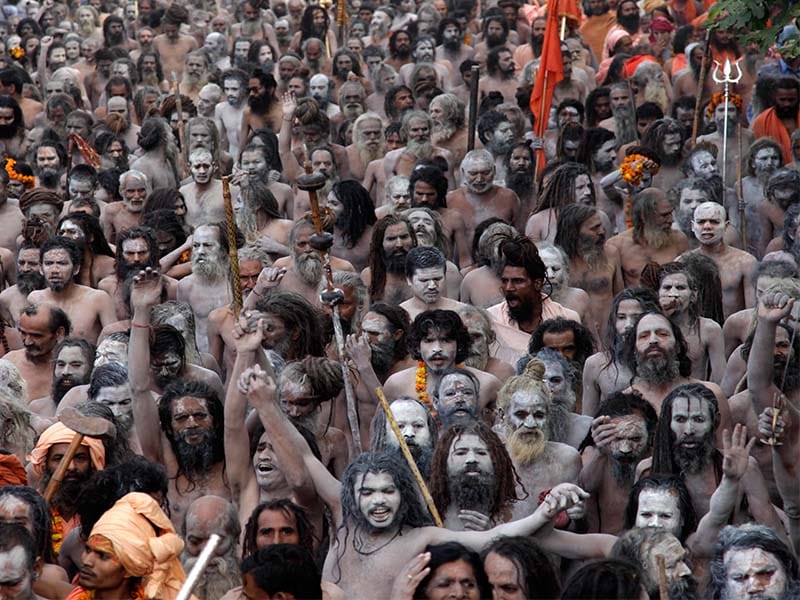Kumbh Mela: A Spiritual Gathering Like No Other
Kumbh Mela is a big deal in the Hindu world. It’s not just another festival but a huge mix of faith, culture, and spirituality. Every twelve years, this event takes place at four important locations in India: Allahabad (also known as Prayagraj), Haridwar, Ujjain, and Nashik. People from all over come together, creating an amazing sight. Millions of pilgrims, tourists, and devotees gather at these sites to take part in traditional rituals and connect with their spiritual side. We’ll look at what Kumbh Mela really is. We’ll explore its history, the cultural impact it has, and how Hindu followers celebrate this event. We’ll also touch on its religious significance and why it attracts so many people globally.

The Roots of Kumbh Mela
So where did Kumbh Mela come from? It actually goes way back to ancient Hindu texts called the Puranas. There’s a pretty cool story about the churning of the ocean, which you might know as ‘Samudra Manthan.’ In this tale, gods (Devas) and demons (Asuras) worked together to stir up the ocean to find Amrita, the nectar that grants immortality. As they churned, a pot filled with this heavenly drink surfaced. Naturally, both parties wanted it, which led to a fierce fight. To make sure only the gods got the nectar, Lord Vishnu turned into a beautiful woman named Mohini. She gave it to the Devas, but in the chaos, some drops fell into the rivers at four spots on Earth: Allahabad, Haridwar, Ujjain, and Nashik.
These spots became the Kumbh Mela locations every twelve years. The festival honors the fight of good versus evil and reminds everyone of the spiritual link between the physical world and the divine.
Why Kumbh Mela Matters in Hindu Beliefs
In Hinduism, dharma is a big word that means the right way to live. Kumbh Mela is crucial because it aligns with this idea. It gathers millions who come together to find spiritual cleansing. Many people believe that a dip in these sacred rivers can wash away sins and lead to liberation, or moksha. When you step into the holy water, it’s not just about getting clean. It’s a way to reflect on life, grow spiritually, and understand the bigger picture. The event is also about unity. Everyone is there for the same purpose – to seek blessings and connect with others. It’s a great reminder that we’re all in this together, no matter where we come from.

The Four Special Places for Kumbh Mela
Kumbh Mela is celebrated at four well-known locations in India. Each site has its own significance, tied closely to Hindu stories and traditions:
- Prayagraj (Allahabad): This meeting point is where three rivers – Ganges, Yamuna, and the imaginary Saraswati – flow together. It’s the most sacred site and hosts Ardh Kumbh every six years and Maha Kumbh every twelve years.
- Haridwar: Found in Uttarakhand, Haridwar is one of India’s holiest cities. It’s where the Ganges River first enters the plains and begins its long journey to the sea.
- Ujjain: Located in Madhya Pradesh, Ujjain is closely linked with Lord Shiva and features the famous Mahakaleshwar temple. Kumbh Mela here happens by the Shipra River.
- Nashik: In Maharashtra, Nashik is known for its celebrations by the Godavari River. Legend says this is where drops of the immortal nectar fell.
These places hold a lot of spiritual importance. Pilgrims eagerly travel to these sites to soak in the holy water and experience this unique celebration.

How to Enjoy Kumbh Mela
Kumbh Mela is not just about bathing in the river. It’s a full-on spiritual experience. Here are some ways people celebrate:
1. The Holy Dip (Snan)
At the heart of Kumbh Mela is the sacred bath, called Snan. Many believe that taking a dip during the special times of the festival can wipe away sins and bring salvation. There are set dates for bathing that are based on astrology.
2. Offering Prayers (Puja)
People perform various prayers, often at temporary temples or right by the river. Common rituals include giving flowers, fruits, and incense to gods like Lord Shiva and Goddess Ganga. Chanting mantras and doing Aarti (light rituals) are also big parts of the celebration.
3. Giving to the Needy (Daan)
Charity is a key part of Kumbh Mela. Many participants share food and clothing with those in need. This act of kindness is known as ‘Seva’ and is valued highly in Hindu culture.
4. Spiritual Gatherings (Satsangs and Kirtans)
Throughout the event, spiritual leaders hold talks on scriptures and important life lessons. Kirtans (devotional music) and Bhajans (songs) are sung to create a joyful atmosphere and bring people closer to their spirituality.
5. Procession of Holy Men
One amazing sight at Kumbh Mela is the grand arrival of sadhus, or holy men. They often wear special robes and engage in rituals at the river. The Naga sadhus, for instance, are ascetics who give up worldly comforts. Their presence adds wonder and respect to this festival.
6. Family and Community Bonding
While deeply spiritual, Kumbh Mela is also a time for people to come together. Families camp out at the site, and everyone shares in the festivities. It’s a time filled with joy, laughter, and a sense of community.

The Role of Sadhus at Kumbh Mela
Sadhus play a vital role during Kumbh Mela. These wise and holy men are seen as guides, sharing their knowledge with others. The Naga sadhus stand out, living a life of meditation and discipline. Their presence during the festival adds a mystical touch and draws many people looking for blessings and guidance.
Kumbh Mela’s Global Reach
Even though Kumbh Mela is a Hindu event, it attracts people from all over the world. It’s grown tremendously over time, with millions attending. For example, over 120 million people visited the Maha Kumbh Mela in 2013, making it the biggest peaceful gathering on Earth! Kumbh Mela reflects India’s rich culture and spirituality, drawing in tourists, scholars, and those eager to connect with its meaning. More and more people are coming to see what this unique festival is all about.

Kumbh Mela’s Lasting Impact
Kumbh Mela is much more than just an event. It’s about life, faith, and the shared human experience. It embodies the core values of Hindu beliefs, such as community, service, and devotion. For many Hindus, attending Kumbh Mela is a significant chance to reflect, cleanse, and connect with the divine. It shows how faith can bring people together, regardless of their background. Over the years, Kumbh Mela has changed, but its message of purification, community, and spirituality stays the same. It’s a beautiful display of what Hinduism is all about, inspiring countless individuals and leaving a meaningful imprint on everyone who takes part.



